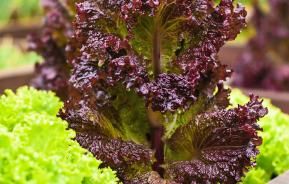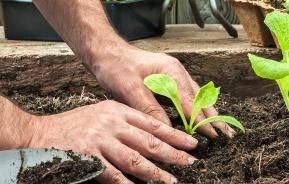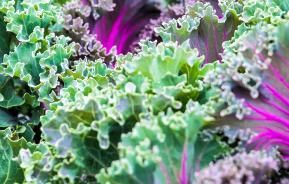Cabbages are an important vegetable to grow at home, especially for winter and spring when few other fresh greens are available. By choosing different varieties you can be cutting cabbages all year round. Lightly steamed they are delicious and can even be eaten raw in coleslaw and salads.
How to grow cabbages
Cultivation
Cabbages prefer to be grown in an open, sunny position, but they will also crop well in a semi-shaded position. They need a fertile, deep soil, that is preferably alkaline, with lots of added bulky organic matter. If your soil is acidic, add garden lime before sowing or planting out. Savoys are a type of winter cabbage.
Cabbage varieties
Although the majority of cabbages are green, there are also red/purple varieties, such as Kalibos, Red Drumhead and Ruby perfection. They also come in shapes other than round – pointed and open and flat.
Cabbages are divided into when they are ready for cropping. The following are all good varieties:
- Spring: Duncan, Offenham 1 – Myatt’s Offenham Compacta, Pixie
- Summer/Autumn: Derby Day, Greyhound, Hispi, Spitfire
- Autumn/Winter: Celtic, Huzaro, January King 3, Kilaton
- Savoy: Endeavour, Tundra, Wintessa

Sowing cabbages
For best results, sow seeds very thinly in a separate seed bed in a shallow drill about 13mm (½in) deep. Cover with soil and water in well. Actual sowing times depend on which types you are growing:
- Spring cabbage: Sow in July/August. Transplant into cropping positions from September to November.
- Summer cabbage: Sow from late February/early March (under cloches or similar covers, or indoors with gentle heat) until early May. Transplant in May/June. The later sowings will crop into autumn.
- Winter cabbages: Sow from April to early June. Transplant in late June/July. The earliest sowings will start cropping in autumn.
How to care for cabbages
When the young plants have 5 or 6 leaves, carefully lift and transplant them to their final growing position. Improve the soil first with a general granular plant feed. Firm the soil around each plant afterwards and water in well.
Space compact varieties 30cm (1ft) apart, larger varieties up to 45cm (18in) apart. Plant spring cabbages just 10cm (4in) apart in rows 30cm (1ft) apart, then thin out to 30cm (1ft) apart in late February/March and use the thinnings as delicious, tasty spring greens.
Water plants well in dry weather and cover the soil with a mulch to conserve soil moisture. Occasional feeds with a liquid feed through summer will improve the crop.
Harvesting
Cabbages are harvested by cutting through the stem with a sharp knife just above ground level once they’ve developed a good sized head as and when they’re needed.
For an extra bonus crop of spring and summer cabbages, don’t dig up the roots after harvesting, but cut a 13mm (½in) deep cross in the stump. Feed with a liquid plant food and you’ll be rewarded with several small cabbages in about 5 weeks.
| Flowering season(s) | Spring |
|---|---|
| Foliage season(s) | Spring, Summer, Autumn, Winter |
| Sunlight | Partial shade, Full sun |
| Soil type | Chalky, Clay, Loamy, Sandy |
| Soil pH | Alkaline |
| Soil moisture | Moist but well-drained |
| Ultimate height | Up to 30cm (12in) |
| Ultimate spread | Up to 30cm (12in) |
| Time to ultimate height | 4 months |








